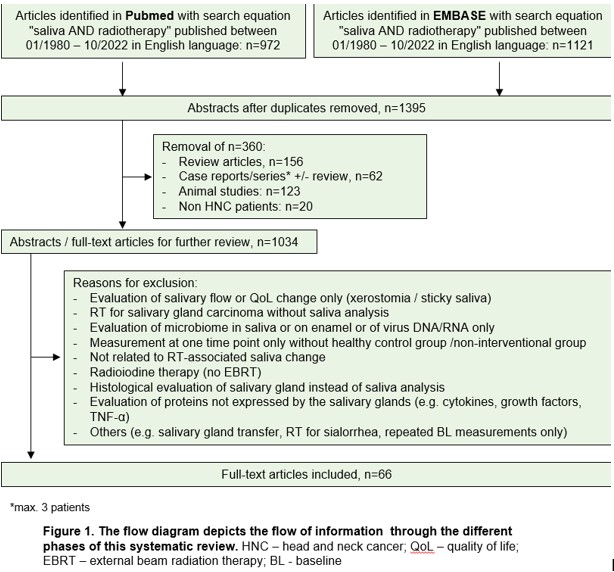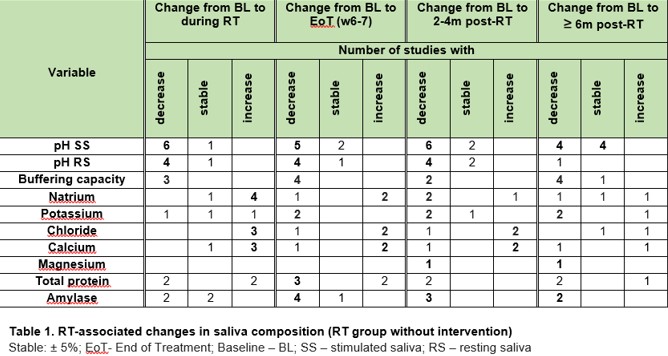A systematic review of radiotherapy-associated changes in saliva composition
Michal Staruch,
Switzerland
PO-1217
Abstract
A systematic review of radiotherapy-associated changes in saliva composition
Authors: Michal Staruch1, Marlene M Speth2, Daniel M Aebersold3, Oliver Riesterer1, Sonja Stieb1
1Kantonsspital Aarau, Center for Radiation Oncology KSA-KSB, Aarau, Switzerland; 2Kantonsspital Aarau, Department of Otorhinolaryngology, Aarau, Switzerland; 3Inselspital, Bern University Hospital, and University of Bern, Department of Radiation Oncology, Bern, Switzerland
Show Affiliations
Hide Affiliations
Purpose or Objective
The aim of this review was to summarize the existing data and provide an overview of saliva changes in patients receiving radiotherapy (RT) to the head and neck region. To our knowledge, this is the first systematic review assessing the fluctuations in saliva pH, its buffering capacity, electrolyte and total protein concentrations as well as salivary amylase activity during and after RT.
Material and Methods
The PubMed and Embase databases were searched independently by two reviewers for studies published in English between 1980 and 2022 analyzing the saliva composition of patients at several time points before, during and after RT to the head and neck region [Figure 1].
Results
Of 1,395 publications screened with the search term "saliva AND radiotherapy", 66 met the eligibility criteria [Figure 1]. Salivary pH changes and buffering capacity were examined in 27 and 11 studies, respectively, with a substantial decrease in values described in most of the studies during and post-RT. Ten studies depicted fluctuations in electrolyte concentration (natrium, potassium, chloride, calcium and others). The majority of those studies showed an initial elevation of natrium followed by a decrease during and post-RT, and reduced concentrations for potassium and magnesium post-treatment. A decrease in salivary total protein during RT and a slow increase thereafter were observed in the majority of the studies. Five studies investigated changes in salivary amylase. The authors described a continuous decrease in amylase activity during RT and a trend towards normalization post-treatment in most patients [Table1].

Conclusion
Although many studies examined changes in saliva production during and after RT, there is still an urgent need for further investigation of radiotherapy-associated changes in saliva composition. Based on this systematic review, saliva alterations manifest in a substantial decrease in pH/buffering capacity and change of electrolytes. Total protein and amylase in saliva seem to decrease during and post-RT.